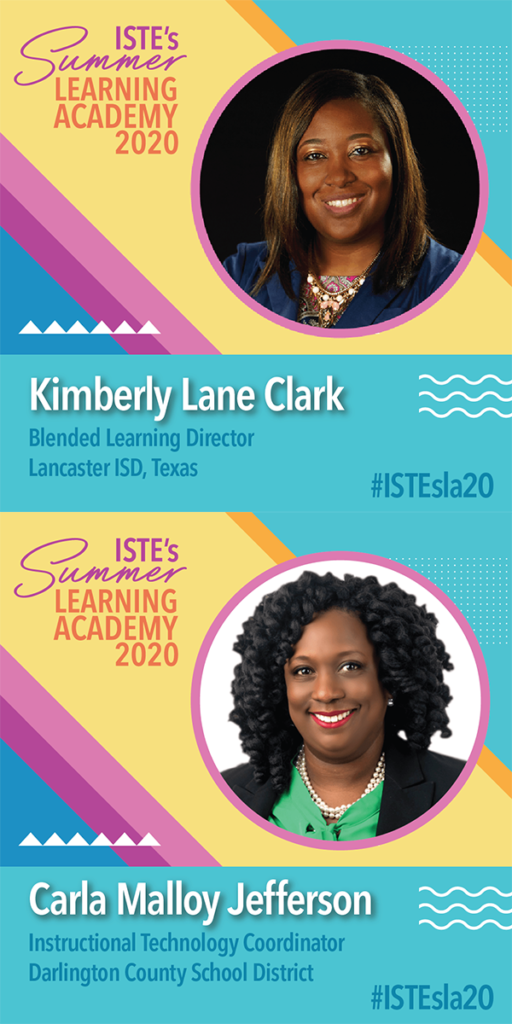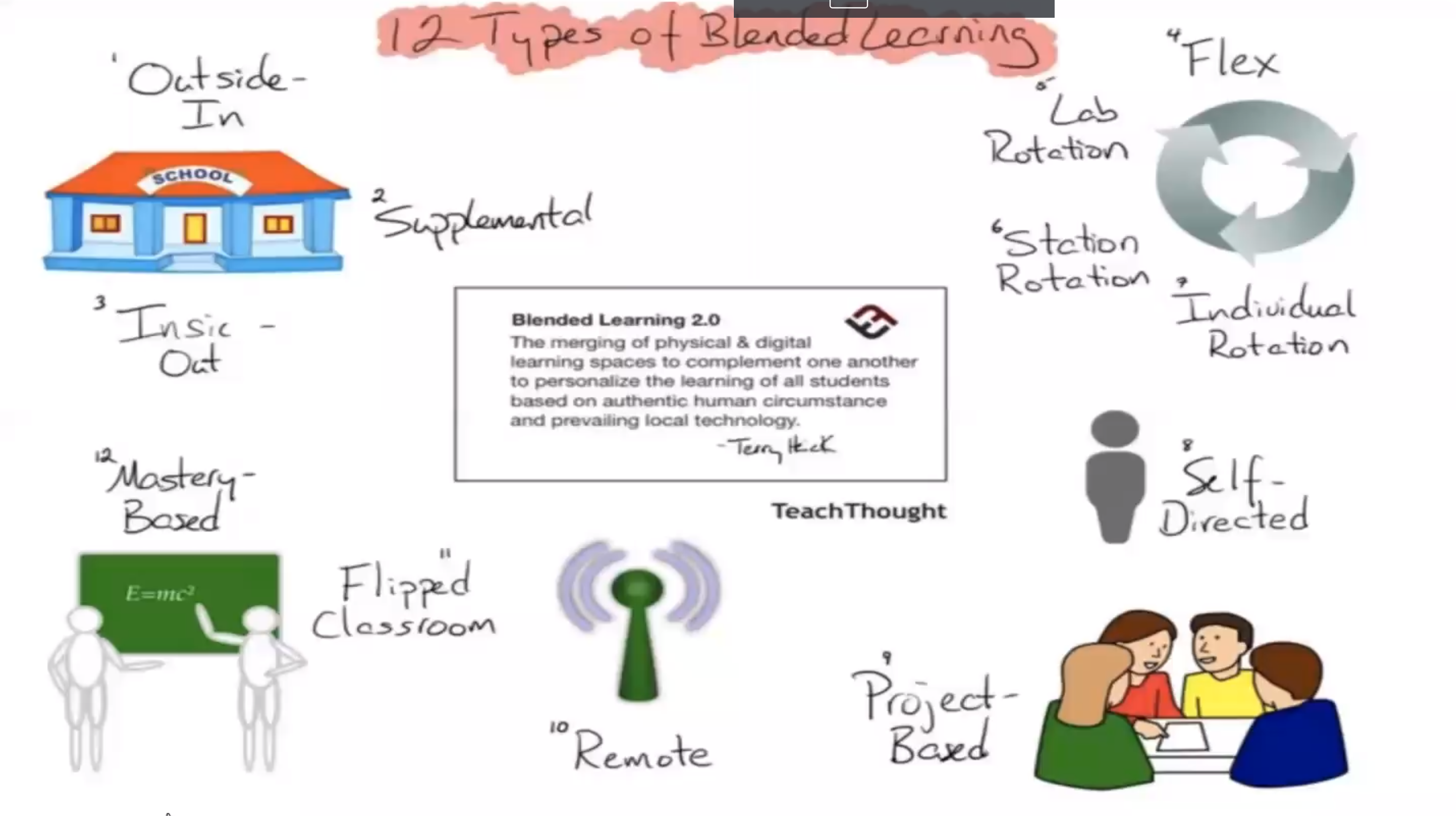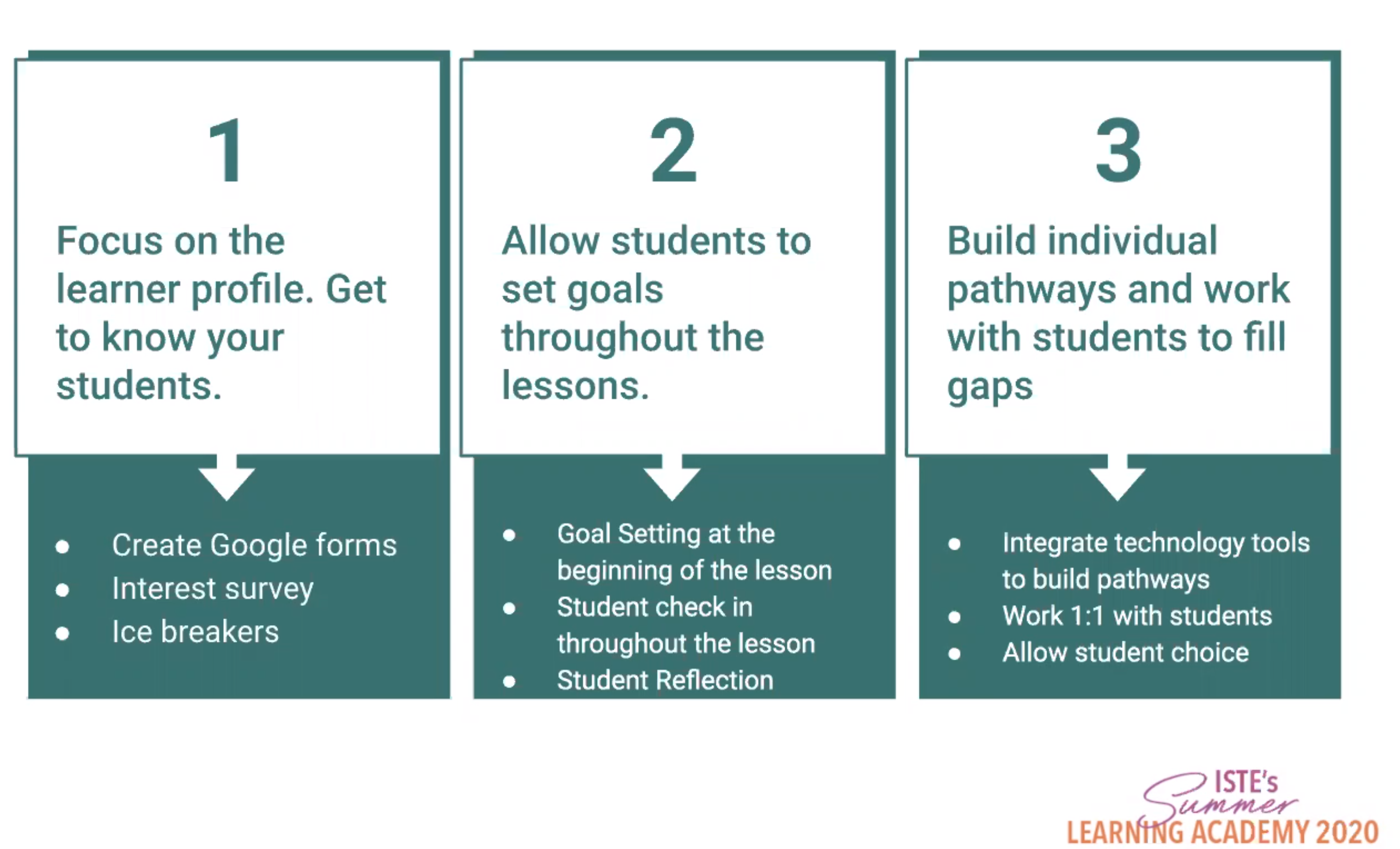Blended Learning: Shifting the Paradigm – #ISTEsla20 Wk 2 Day 3
The following post has been completed as part of my personal reflection as I work through the ISTE Summer Learning Academy #ISTEsla20 Any images,tables, or direct quotes (as indicated with the appropriate formatting) are provided from the specific course or webinar and can be credited to: ISTE Summer Learning Academy. (2020). https://summerlearningacademy.iste.org/

Week 2 – Day 3 is the perfect compliment to the Blended Learning discussion started on Wk 1 – Day 4 as well as through the Blended Learning Practice MOOC. It is facilitated by Kimberly Clark and Carla Jefferson and described as:
“For remote teaching to be engaging for all learners, educators must consider the academic, career and social-emotional learning (SEL) of their students. This requires savvy lessons that focus on equity, incorporate sound teaching strategies, include edtech with breakout room capabilities and interactive slides, and are social enough for the most digitally connected students. Join education coach Jorge Valenzuela for a session that will provide pro tips, resources and actionable steps to help you level up both your virtual and face-to-face lessons by focusing on equity and SEL in tandem with academics.”
Main Takeaways
- Why go blended learning?
- Within our current context of teaching during the Covid-19 pandemic, I see blended learning as an option that can assist with:
- alternative scheduling (if students are only on-site for particular days and at home for others)
- if students or staff are required to move into quarentine while awaiting test results
- providing a foundation to switch to full online instruction in the event of another suspension of classes
- Within our current context of teaching during the Covid-19 pandemic, I see blended learning as an option that can assist with:
- There are many different types and models of blended learning depending on the author and context

- Seven Structures for Blended Learning (this list is pulled from info shared today and mixed with info from the Blended Learning Practice MOOC I’m taking).
- 1. Blended F-2-FClassroom-based
- Many activities replaced with online options
- F-2-F used for higher-level activities
- 2. Blended OnlineOnline-based
- Students come in for certain activites/labs
- 3. Flipped ClassroomSub-model of 1 & 2
- Students watch lecture at home then come in to do an activity/discussion
- 4. Rotation Model
- Stations/centers that offer both online and F-2-F activities on site
- 5. Self-Blend Model
- Students develop a timetable where some courses they pick are F-2-F and some are online
- 6. Blended MOOC
- In-class discussions/activities to suppliment a public MOOC
- 7. Flexible Mode Course
- All content/activities are presented in both models and students pick and choose which model they’d like to use
- 1. Blended F-2-FClassroom-based
- Introduce the technology, teach students how to use it for learning, go over expectations, and provide opportunities for practice before full implementation (gradual release of responsibility)

- Pick a few tools and stick with them; don’t overwhelm students and parents with too many tools/logins/interfaces
Questions
- What are the differences between differentiated, personalized, and individualized instruction?
- What challenges arise in moving toward a technology-rich classroom, remote learning and blended learning environment?
- Consider structural concerns, instructional challenges, management issues, etc
- What tools/strategies will you use to share information? to gather information? to connect with students?
General PD Thoughts
- I appreciate being able to watch recording sessions in 1.5x (while still pausing and re-starting as much as I need to write my notes).
- Having a “troubleshooting check-in” person (someone who can jump in bring up things like muting mics, echos, non-working links, prominant questions from the chat, etc) can assist with things running smoothly.
- It can be challenging to provide participants with sufficient time to review/read/etc as you can’t see them to read their physical cues (it can seem like a long time when you wait in isolation when it may seem rushed for participants); setting a timer for yourself and participants can be helpful.
- Today’s webinar shared the following ed tech tools: EdPuzzle, SeeSaw, TED-Ed, and Screencastify.
- Thank you to Kim and Carla for sharing!
Read all of the #ISTEsla20 posts:
- Microcourses
- Week 3
- Week 2
- Week 1
4 thoughts on “Blended Learning: Shifting the Paradigm – #ISTEsla20 Wk 2 Day 3”